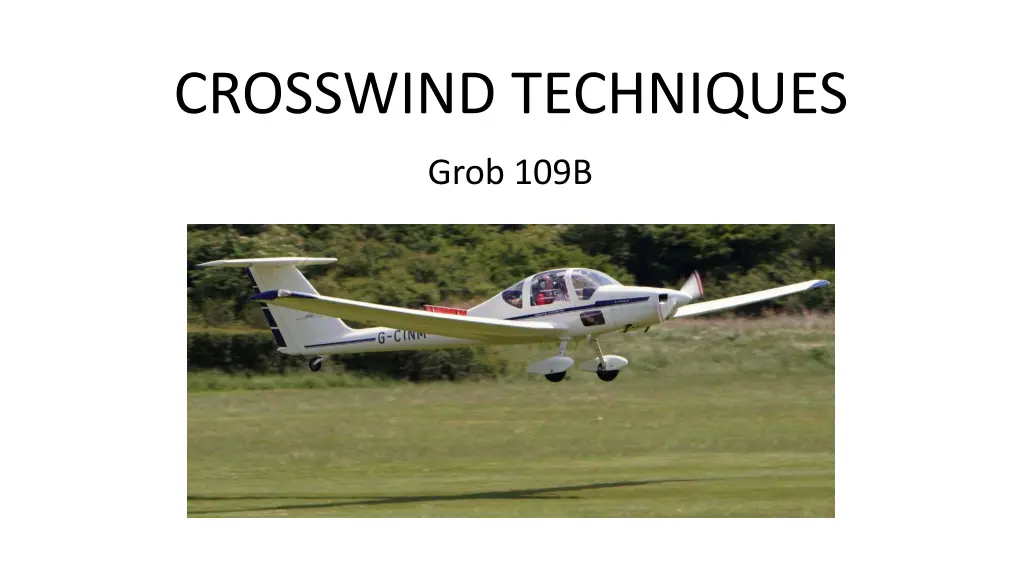
Aviation Crosswind Techniques
Explore essential crosswind techniques for pilots, including causes of yaw, managing crosswind limits, take-off and landing procedures, and taxiing tips. Learn how to handle crosswinds effectively to ensure safe flight operations.
Download Presentation

Please find below an Image/Link to download the presentation.
The content on the website is provided AS IS for your information and personal use only. It may not be sold, licensed, or shared on other websites without obtaining consent from the author. If you encounter any issues during the download, it is possible that the publisher has removed the file from their server.
You are allowed to download the files provided on this website for personal or commercial use, subject to the condition that they are used lawfully. All files are the property of their respective owners.
The content on the website is provided AS IS for your information and personal use only. It may not be sold, licensed, or shared on other websites without obtaining consent from the author.
E N D
Presentation Transcript
CROSSWIND TECHNIQUES Grob 109B
Causes of YAW Precession Slipstream Torque Crosswind P-Effect
How Much Crosswind? Northerly @ 15kts Runway 30 Headwind: 7.5 kts Crosswind: 13 kts
Taxying Climb into the wind Dive away from the wind Don t taxy using brakes against power Burst of power gives rudder authority Ground Loop: Once past ~75o brakes will accelerate loop T-Tail outside slipstream
Crosswind Limitations Most aircraft manuals do NOT use the term Limitation with relation to Crosswinds Term used is Demonstrated Crosswind Capability Crosswind that happened to be present when it was demonstrated That said as always consider your insurance
Take-Off Allow the aircraft to fly itself off Choose when it flies 50kts 25kts
Landing Controls co-ordinated balance ball in the middle while at altitude Wings level close to the ground Wing Drop (more gently the slower you are) / may also cause pitch change Too early (will start drifting) or too late sideways load on undercarriage Fully held off landing / Stick fully back when on ground
